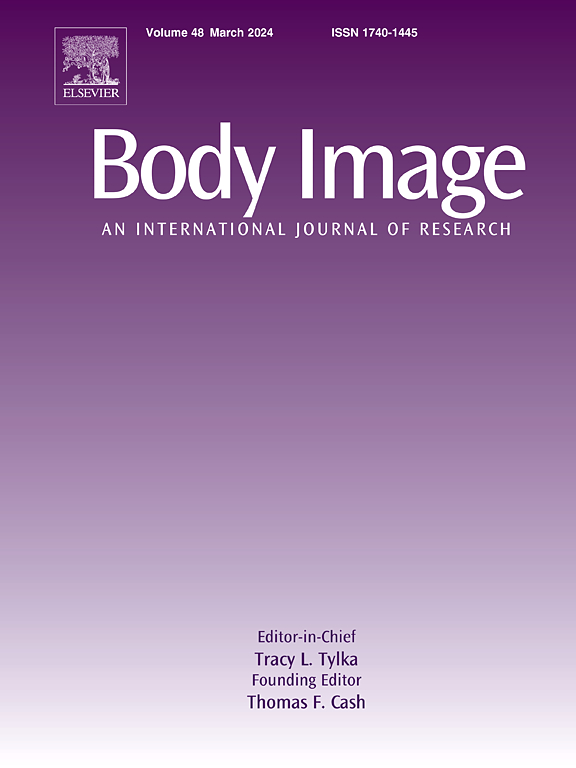在以人群为基础的年轻人样本中,瑜伽的练习及其与体现、身体形象、内化体重耻辱感和饮食失调的联系
IF 5.4
1区 心理学
Q1 PSYCHIATRY
引用次数: 0
摘要
本研究探讨了瑜伽练习的流行程度及其与体现、内化体重耻辱感、身体满意度、不健康体重控制行为和暴饮暴食之间的联系。数据是作为饮食和活动随时间(EAT)研究的一部分收集的。参与者包括994名成年人(平均年龄:27.6岁;范围:24-35),来自边缘民族/种族和低收入背景的比例很高。进行了横断面和五年纵向分析。大约五分之一(18.6 %)的参与者在过去一年中练习瑜伽,11.8 %的参与者定期练习(过去一年中每周≥30 分钟)。定期练习瑜伽的流行程度因性别(女性和性别少数群体最高)、教育程度(教育程度越高)和身体质量指数(瑜伽练习者越低)而异,但没有因种族/种族或年龄而异。在大多数分析中,经常练习瑜伽始终与更强的体现有关,并且与更低的内在体重耻辱感和更高的身体满意度有关。与不练习瑜伽的人相比,经常练习瑜伽的人饮食失调的比例同样高,甚至更高,在分析模型中存在一些差异。研究结果为瑜伽和化身之间的联系,以及化身和饮食失调之间的联系提供了支持。瑜伽促进了一种体现感,可能有助于减少饮食失调。本文章由计算机程序翻译,如有差异,请以英文原文为准。
The practice of yoga and associations with embodiment, body image, internalized weight stigma, and disordered eating in a population-based sample of young adults
This study explores the prevalence of yoga practice and associations with embodiment, internalized weight stigma, body satisfaction, unhealthy weight control behaviors, and binge eating in a diverse population-based sample. Data were collected as part of the Eating and Activity over Time (EAT) study. Participants include 994 adults (mean age: 27.6; range: 24–35), with high percentages from marginalized ethnic/racial and low-income backgrounds. Cross-sectional and five-year longitudinal analyses were conducted. Approximately one-fifth (18.6 %) of participants practiced yoga in the past year, with 11.8 % practicing regularly (≥ 30 min per week in the past year). The prevalence of practicing yoga regularly differed across gender (highest in women and gender minorities), education (higher at higher levels of education), and BMI (lower in yoga practitioners), but not across ethnicity/race or age. Practicing yoga regularly was consistently associated with greater embodiment and, in most analyses, with lower internalized weight stigma and higher body satisfaction. Disordered eating behaviors were equally high, or higher, among regular yoga practitioners as compared to non-practitioners, with some differences across analytic models. Findings provide support for the connection between yoga and embodiment, as well as embodiment and disordered eating. Yoga that promotes a sense of embodiment is likely to help reduce disordered eating.
求助全文
通过发布文献求助,成功后即可免费获取论文全文。
去求助
来源期刊

Body Image
Multiple-
CiteScore
8.70
自引率
28.80%
发文量
174
期刊介绍:
Body Image is an international, peer-reviewed journal that publishes high-quality, scientific articles on body image and human physical appearance. Body Image is a multi-faceted concept that refers to persons perceptions and attitudes about their own body, particularly but not exclusively its appearance. The journal invites contributions from a broad range of disciplines-psychological science, other social and behavioral sciences, and medical and health sciences. The journal publishes original research articles, brief research reports, theoretical and review papers, and science-based practitioner reports of interest. Dissertation abstracts are also published online, and the journal gives an annual award for the best doctoral dissertation in this field.
 求助内容:
求助内容: 应助结果提醒方式:
应助结果提醒方式:


